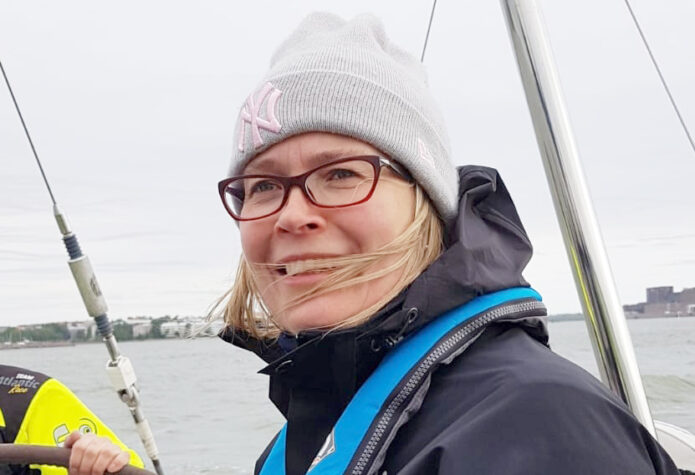Persistence needed in Baltic Sea protection

The collaboration between the 14 states in the catchment area of the Baltic Sea has produced good results and made a difference, not only for the sea itself, but also for the people and businesses around it.
By Ms Annamari Arrakoski-Engardt, Secretary General of John Nurminen Foundation
Climate change is part of our everyday life. We are choosing low carbon food, transportation or heating systems and recycle everything that is possible. There is so much discussion about climate change, carbon sinks and emissions that it is sometimes hard to navigate through it all, while remaining focused on the main sources and the main – scientifically certified – methods of cutting CO2 emissions.
The discussions around climate change and ocean protection seem to have similarities. For the first time, there are some measures that will both reduce global warming and benefit the conservation of the sea. However, not all actions taken towards ocean protection have an impact on climate change.
One of the actions benefiting both oceans and climate is fishing—the very ancient way of getting healthy food from sea onto your plate—but only when it is done in a sustainable way. Through fishing, a significant amount of nutrients is recycled from eutrophied sea areas to land. Fish is the only food that does not accelerate climate change when produced. Even vegetable-based food produces emissions, as it is produced in fields, which are mostly sources of climate gas emissions. Although the negative impact of a vegan diet is much smaller than that of a milk- or meat-based diet, for which plants are fed to animals as fodder, it still exists. Sustainably caught fish is healthy and emission-free protein, and therefore the perfect basis for a planetary diet.
Climate change has pushed ocean protection work to a totally different speed. It has also affected the way we work here at the John Nurminen Foundation. We implement tangible Baltic Sea protection measures that bring measurable results and ensure that the stories of the sea are passed on to future generations. Through various joint projects in Russia, the annual eutrophying phosphorus load on the Gulf of Finland has successfully been reduced by as much as 75%.
However, the effects of climate change further accelerate the eutrophication of the Baltic Sea, which is the most serious environmental problem facing the sea. Eutrophication is caused by the excessive amounts of phosphorus and nitrogen running into the sea. So now, more speed and even more effective methods are needed.
The Baltic Sea science community has brought up the idea that the Baltic Sea could serve as a test bed for solving some of the problems that other coastal oceans are also facing. There are reasons to believe that it could work. That it is necessary goes without saying.
All the nine states around the Baltic Sea have e.g. environmental laws, functioning waste collection, wastewater plants and a growing amount of recycling of different materials. Furthermore, the joint political forum, HELCOM, ensures that the newest research results are included in the protection work and that joint goals are set for the conservation of the sea.
We have been very successful in the Baltic Sea protection collaboration, and have been able to achieve good results in reducing the external load of nutrients and hazardous substances. The idea of testing new methods in practice, proven in laboratories, to, e.g. reduce the internal nutrient load in the Baltic Sea is needed. We at the John Nurminen Foundation have—in addition to our traditional projects reducing land-based pollution—already launched our first project, called SEABASED, to pilot measures for reducing internal nutrient load.
We all need to move forward in the protection of the Baltic Sea and should use all our efforts to return our sea to a good condition ecologically. We are moving into the right direction, and this can be useful to know for colleagues elsewhere who face similar problems in their coastal waters.
We need the Baltic Sea. Its poor state is the result of our – rather unhealthy – relationship with it. But having said that, I must state that I believe we humans can also provide the solution for it. We will be able to return the Baltic Sea to a good condition, not only because we like it more when it does not smell, or because we need it as a production plant for oxygen so that we can breathe (50% of the oxygen that we need is produced by the oceans). We do it also because the sea is more valuable for our well-being, culture and economy if it is in good condition and thus able to give us pleasure and culture, not to mention an income.
Now more than ever, persistence is needed. We need to continue the good work in order to revive the Baltic Sea. We need to continue the collaboration on different levels in finance, research, implementation and awareness. Hopefully, the Baltic Sea can be a positive example in times of global warming and climate change anxiety.
Did you find the article interesting? Subscribe to our newsletter on the bottom of this page for similar stories.